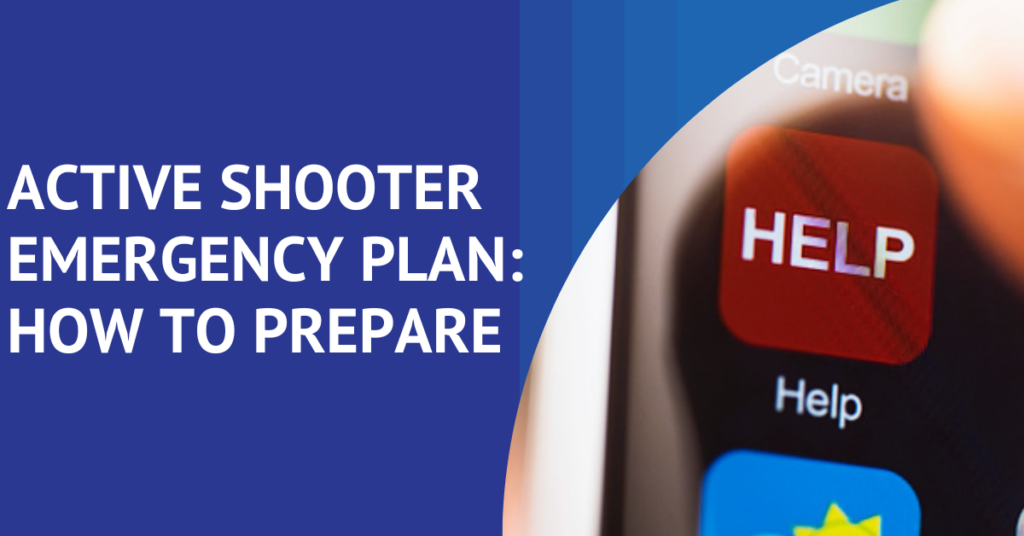How to Build a Comprehensive Emergency Action Plan (EAP)

In today’s unpredictable world, organizations must be prepared for any crisis—including the threat of an active shooter. A well-structured Active Shooter Emergency Action Plan (EAP) can mean the difference between chaos and a coordinated, life-saving response. Developing and maintaining a proactive safety strategy ensures employees, students, visitors, and the entire community are protected.
The Cybersecurity and Infrastructure Security Agency (CISA) provides valuable resources to help businesses, schools, and healthcare facilities create customized active shooter response plans that enhance safety and preparedness. Below are the key components every organization should implement to establish a comprehensive and effective Active Shooter Emergency Plan.
Key Components of an Effective Active Shooter Emergency Action Plan
1. Formation of a Collaborative Planning Team
Building an effective response plan starts with assembling a cross-functional team that includes security personnel, HR, facility management, and leadership. A well-rounded team ensures a comprehensive approach to risk assessment, decision-making, and plan execution.
2. Risk Assessment
Every organization has unique vulnerabilities that must be addressed. Conducting regular security assessments helps identify potential weaknesses, such as unauthorized access points, insufficient surveillance, and gaps in emergency response protocols. Addressing these issues proactively reduces risks and enhances preparedness.
3. Communication Strategies
Effective real-time communication is critical in an active shooter situation. Organizations should use emergency notification software that provides:
- Instant alerts via text, email, phone, desktop pop-ups, and public address systems.
- Two-way communication so individuals can report their safety status or request assistance.
- Automated alerts with pre-configured messages for faster response times.
- Location-based notifications to target specific areas without causing unnecessary panic.
- Integration with security systems such as access control and surveillance for enhanced safety measures.
A clear, multi-channel communication system ensures swift action, minimizes confusion, and keeps all stakeholders informed.
4. Evacuation and Shelter-in-Place Procedures
An effective response plan must define when individuals should evacuate or shelter in place. Organizations should:
- Clearly mark evacuation routes and safe zones throughout the facility.
- Conduct regular drills to ensure employees and visitors know the procedures.
- Designate staff members to assist in guiding people to safety during an emergency.
5. Training and Exercises
Preparedness depends on consistent training and practice. Conducting active shooter drills, scenario-based exercises, and awareness training empowers employees to:
- Recognize warning signs of potential threats.
- Respond quickly and effectively in high-stress situations.
- Support others during an emergency.
Training should be ongoing and adapted as new risks and best practices emerge.
6. Coordination with Emergency Responders
Building strong relationships with local law enforcement, fire departments, and emergency medical services is critical. Organizations should:
- Share their emergency action plan with first responders.
- Invite local authorities to participate in drills and offer feedback.
- Ensure responders are familiar with facility layouts, entry points, and security measures.
Early coordination allows emergency personnel to respond more effectively in a crisis
7. Post-Incident Procedures
Response efforts do not end when the immediate threat is neutralized. Organizations must plan for:
- Accounting for all individuals and providing necessary medical assistance.
- Supporting mental health recovery for employees, students, or visitors affected by the event.
- Reviewing the incident to identify strengths and areas for improvement in the emergency response plan.
By learning from past events, organizations can continuously improve their safety protocols and ensure they remain prepared.
Building a Safer Future
An Active Shooter Emergency Plan is not just a compliance requirement—it is an essential tool for protecting lives. Organizations that prioritize proactive planning, effective communication, and strong coordination with emergency responders create a safer environment for employees, visitors, patients, and students alike.
At Universal Connectivity, we are committed to helping organizations implement reliable, life-saving emergency preparedness solutions. From emergency notification systems to secure communication tools, we provide the technology and expertise needed to strengthen your response strategy. Contact us to explore how we can help you implement the right tools to keep everyone safe.
Click here to download valuable resources from CISA (Cybersecurity and Infrastructure Security Agency) to support preparedness efforts and help your organization create a comprehensive Emergency Action Plan (EAP).
Choosing a Business Phone Provider
How do you choose the right business communication partner to help your business thrive? Grab our free, one page checklist. Compiled based on years of experience, this download can help you jump start your search and selection process and:









